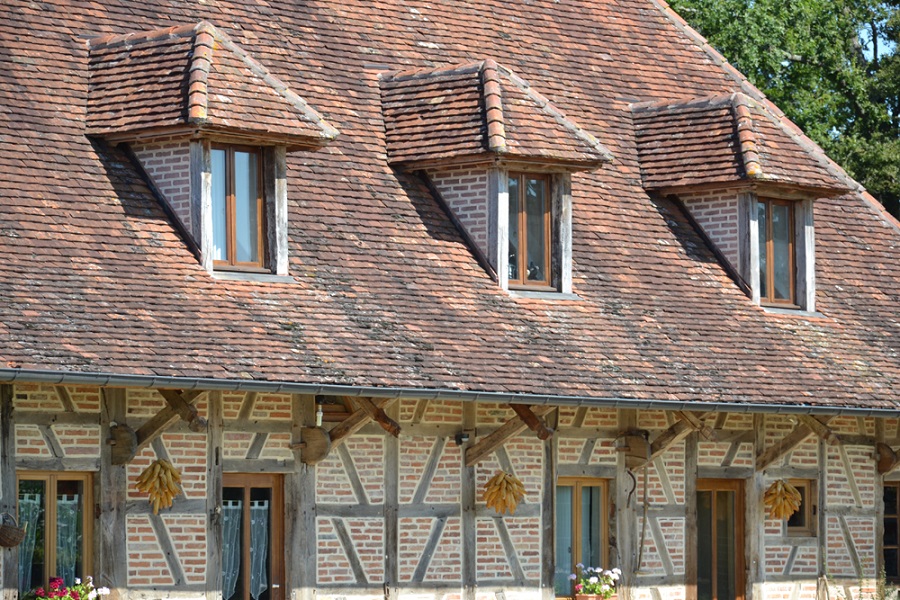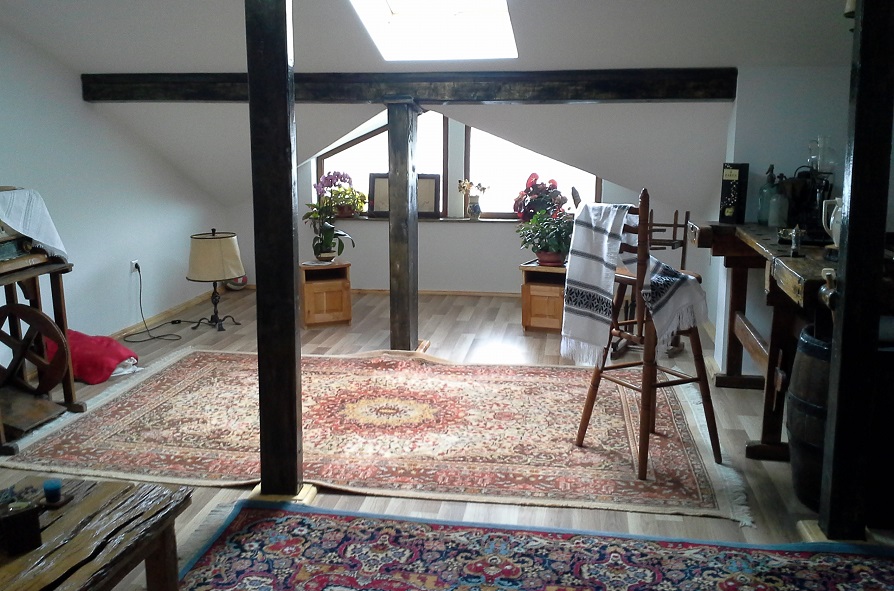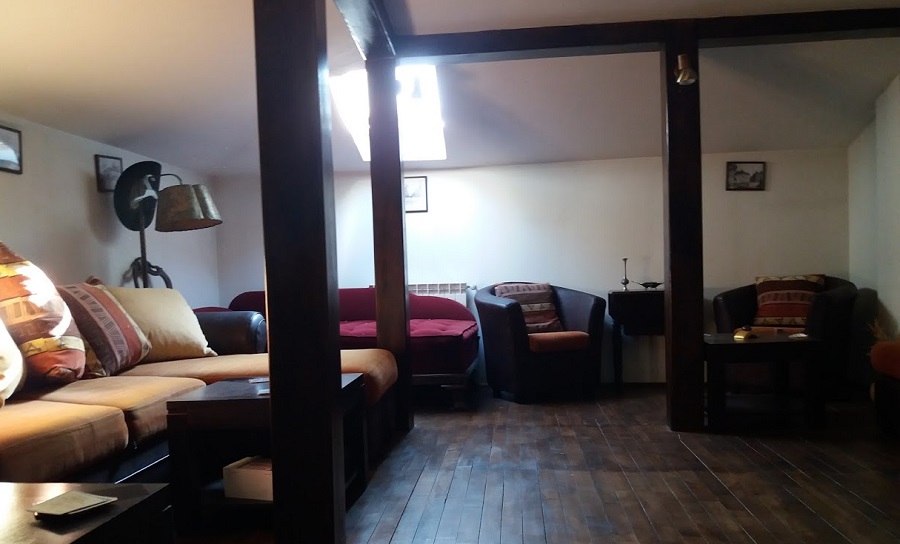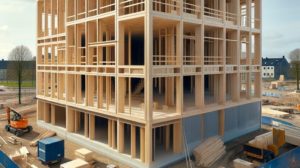Sometimes there is not enough space in the house for all the family members. Children arrive, grow up, we work from home and need an office, parents come to live with us - these are just some of the reasons why more space is needed. The options are to move house, build a bigger house or extend the existing one. The house extension can be done horizontally or vertically. For a horizontal extension you will have to give up some of the green space and build from the foundation. Looking at it this way, the vertical extension seems more appropriate, simpler. You can do it by building a storey or a loft. What's the difference between them and what advantages come with loft living I'll tell you in a moment.
A trip into the past
Many paintings and novels were born in Bohemian attics. It's true that the main reason was the low price of housing, but let's not spoil the atmosphere. Have you ever wondered why it's called that, who "invented" this living space? The name is related to the French architect Francois Mansart and refers to a way of building the roof to create an extra living space. Such aThe awning has four sides, with two slopes of different degrees of inclination, the lower slope being steeper than the upper. Windows are mounted on the steeper slope. Nu Mansart was the first to make this type of roof, but used it extensively on his buildings, eventually becoming the "godfather" of the mansard. The style was taken up by other architects spreading throughout Europe and then America.
The windows on these roofs were called skylight. The dormer is a small construction that brings the window upright, like the other windows in the building, although it is positioned on the pitched roof rather than on a straight wall. Their presence along the entire length of the underside of the roof makes the interior space very well lit.
In the meantime, the term attic no longer referred only to the roof but also to a living space under the roof. Now this space is very well defined and we may be surprised to find that not all spaces we consider attics have this status technically and legally.

photo: constructionbois.bilp,fr
What the attic means architecturally and administratively
The attic is the living space immediately below the sloping roof of the house. Specialists emphasise that it is a living space and not a converted one. Habitable means that the space is high enough and furnished enough for a person or family to do their work there. The usable height of a loft should be between 2.3 and 2.5 m. If it is not, the roof must be raised.
Unlike the attic, the loft is not considered habitable space. Spaces under the roof that are small, narrow and without passageways are considered attics. The top level of a building that is under an attic, even if it has sloping walls, is not considered an attic but a storey. In short, if it has an attic above it is not a loft.
Attic is defined administratively as follows: the last habitable level of a house, which is immediately below the pitched roof and has walls sloping at the same angle as the roof slope. If you extend your dwelling in this way you will pay less tax because the tax for the attic dwelling is lower than that for the ground floor + first floor. The tax calculation takes into account a usable area 25% lower than that for a storey.
Advantages of atticing
We've already seen the first advantage - the tax one - but before we pay tax on it, the attic has to be built. Below are a few reasons why choosing this way of extending your home is more convenient:
- lower construction costs
- light weight compared to a new floor
- shorter construction time
- special appearance
The advantage on construction costs are seen as early as the design phase when you need planning permission. It costs less than that for building an extra storey. The most advantageous option is the attic when there is already an attic of the required height. It is more of a development that involves insulating the walls, roof and floor, reinforcing the floors in the case of an old house (we have had this experience), building partitions, fitting windows, making the routes and fitting the heating and plumbing. These improvements, even the more complicated ones involving raising the roof or making access more convenient, cost less than building an entire floor from scratch.
Low loft weight results from the use of existing walls. Interior fittings are much lighter and don't overload the load-bearing structure. Light weight is an advantage in case of large shocks (earthquake).
Regarding appearance, the attic impresses us all. We extended the house with a loft and saw the reaction of friends and guests. The sloping walls, the spaces, the sound of the rain on the roof, the light that falls in different ways create a special atmosphere. That's why cafés, bookshops and even theatre stages are set up in such spaces. Modern materials and technologies, which provide excellent thermal and sound insulation, remove even the last trace of doubt and leave room for imagination.

Insulation, perhaps the most important aspect when fitting out a loft
If you're looking to save money on loft insulation materials, it's best not to start loft insulation. Without good insulation it will be very hot in summer and very cold in winter, the rain will make a deafening noise, you'll hear every cat taking its evening walk on the roof. There are studies that say that 25% of heat is lost through the attic, and in older houses the losses can be as high as 50%. That means that almost half the money you've spent on heating your home has gone out the window. Isn't it better to invest in good insulation?
When choosing insulation material don't just think about price. There are other more important aspects. Think about the fact that you are making a long-term investment and that the savings you make now are likely to cost you much more in the future. Choose a material with good insulating properties and calculate the thickness needed to get the maximum result. If you have allergies or breathing problems or are a fan of natural products there are plenty of healthy options for insulation: wood fiber, hemp, jute, cellulose, wool. The important thing is that the insulation is effective.
Good loft insulation contributes to the comfort of the whole house. Roof losses will be infinitely lower and heat will be kept at bay in summer. Correct installation of insulation will also mean eliminating leaks on the roof or between levels.
Not perfect, but often the most spectacular and least expensive option
If you have a tall and generous attic, it's a shame to think of another way to expand. You won't lose storage space because the sloping walls of the loft allow for all sorts of useful layouts. And you'll have the extra living space in no time.
You can convert the loft into a bedroom for children who have grown up and can no longer sleep in the same room, a place to rest or meet friends, a separate apartment for one of the children or a work office. In fact, the possibilities are many, it's up to you, your desires and your imagination.































"In short, if it has a loft above it, it's not a loft."
Wrong! The attic is not the top level. Depending on the type of roof, there may even be two attic levels, over which there may also be a loft (obviously small, because it will be restricted by the type of construction).
Good evening!
Do you mean administrative framing? The one for which there is a tax reduction?
From the documents I have studied only the room that is directly under the roof, with no attic above, is considered attic and has tax reduction.
Do you have other data? I am asking to make the necessary changes.
Thank you!